テクノロジーとアートで再構築する“海のあり方”
━━文化庁による文化発信プロジェクト<+A+|CULTURE GATE to JAPAN>を紐解く
The nature of the sea reinterpreted through technology and art—Discover +A+ CULTURE GATE to JAPAN, a cultural promotion project by the Agency for Cultural Affairs
メディア芸術のフィールドで活躍するアーティストたちが日本の文化を題材とした作品を制作し、世界へと発信するプロジェクト「CULTURE GATE to JAPAN」。今回、紹介する『+A+(プラス・エー・プラス)』はそのプロジェクトの一環として企画された展示だ。
Artists engaged in the field of Media Arts have created works of art on the theme of Japanese culture, and are sharing them with the world through the CULTURE GATE to JAPAN project. The +A+ (Plus A Plus) exhibit introduced here is a part of that project.
<MUTEK.JP>のクリエイティブディレクターを務める竹川潤一(davidwattsinc.)のキュレーションのもと、日本文化と海の関わりをテーマに3組のアーティストが作品を制作。2022年3月22日より東京国際クルーズターミナル(施設の開館は2020年9月)の大型ビジョン上で展示が開始された。現在いずれの作品もYouTubeで公開されている。今回は3組のアーティストの発言をもとに、『+A+』の背景に流れるものを探ってみたい。
Under curation by TAKEKAWA Junichi (davidwattsinc.), creative director of MUTEK.JP, three groups of artists have produced artwork based on the relationship between Japanese culture and the sea. On March 22, 2022, the exhibit opened on a large screen at Tokyo International Cruise Terminal, (a facility which opened in September of 2020). Currently, all of the works of art have been made available for viewing on YouTube. In this article, we search for the currents swirling behind +A+ from remarks shared by the three groups of artists.
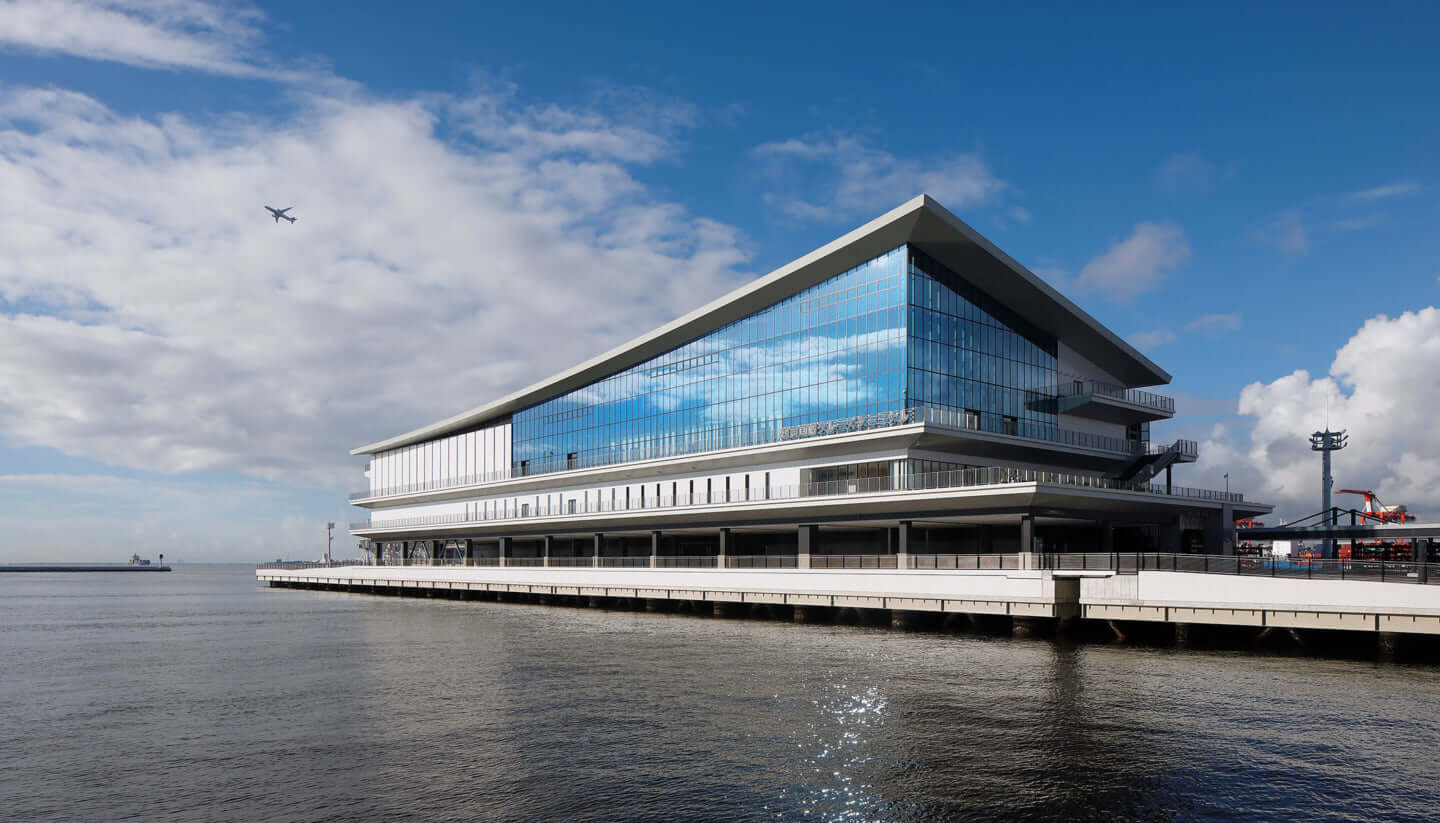
大石啓明 + ながしまみのり『sealed aspect』
“sealed aspect” by OISHI Hiroaki + NAGASHIMA Minori

江戸時代後期、浮世絵師たちは鳥瞰図と呼ばれる図法を用い、空からの視点で江戸の名所を描いた。そのことをヒントにしながら、東京湾の海底に広がる世界を描写したのが大石啓明+ ながしまみのりの『sealed aspect』だ。デジタルアートを専門とする大石啓明は、鳥瞰図をヒントとした理由をこのように話す。
In the late Edo period, Ukiyo-e (Japanese woodblock print) artists used the bird’s-eye-view drawing technique to depict well-known places in Edo from an aerial perspective. Using this as a hint, “sealed aspect” by OISHI Hiroaki and NAGASHIMA Minori envisions a world that unfolds across the seabed of Tokyo Bay. Mr. OISHI, who specializes in digital art, spoke of the reasons for being inspired by the bird’s-eye-view technique.
「航空機やカメラがなかった時代、上空から見た視点は想像上の世界だったわけですよね。見えないものを描こうと思うと現代でも想像力が必要で、そこは変わらないと思うんですよ。東京国際クルーズターミナルにやってくる船も進んでいるうちは海面しか見えないわけで、その下にどんな世界が広がっているのか船の上からは分からない。海の下をクルーズするような作品を作ることができないかなというのが発想の原点ですね」(大石)
“In an era when airplanes and cameras didn’t exist, the perspective drawn from the air was an imagined world. Even today, drawing something that you can’t see requires imaginative skills and I think that remains unchanged. The ships that arrive at Tokyo International Cruise Terminal can only see the surface of the sea as they sail and from that perspective are unaware of what kind of world stretches out below. The idea originated when I wondered if I could create artwork that emulates underwater cruising.” (OISHI)
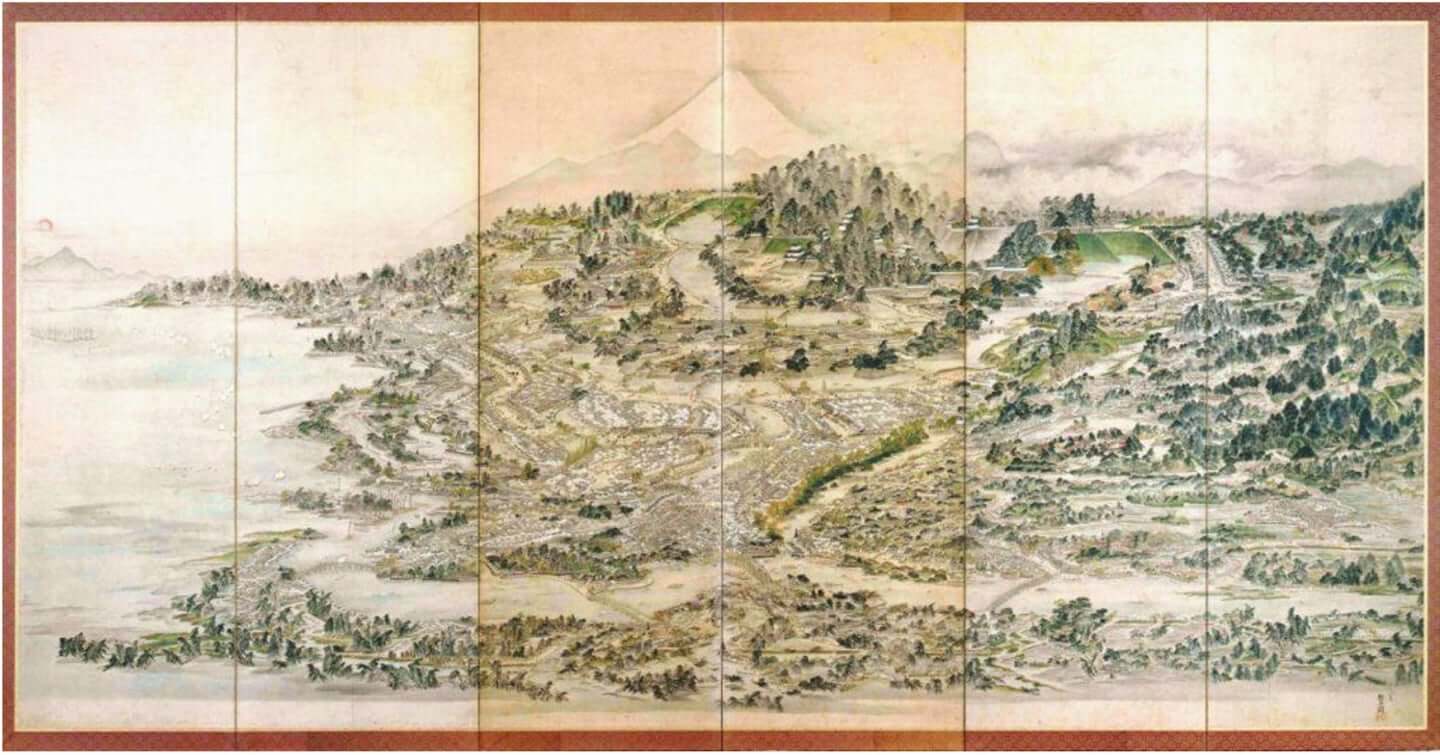
作品の出発点となったのは、国土地理院と日本海洋データセンターが公開している海底地形のデジタルデータだ。CG制作ソフトウェアであるHoudiniを使って標高(水深)データの読み込みと地形データの生成を行い、コンポジットにはAdobe After Effectsを使用。カメラのアングルは相模湾から相模トラフ、さらには伊豆・小笠原海溝へと突き進み、やがて東京近海を見渡す鳥の視点へと移動していく。
The starting point for the art piece was the digital data of submarine topography made public by the Geospatial Information Authority of Japan and Japan Oceanographic Data Center. The computer graphics software Houdini was used to read the elevation (water depth) data and generate topographic data, and Adobe After Effects was used for compositing. The camera angle pushes forward from Sagami Bay to the Sagami Trough and on to the Izu-Ogasawara Trench, then finally switches to a bird’s-eye view overlooking the waters near Tokyo.
「まず東京湾って思ったより浅いんだなと思いました。確か最大水深が70mとかなり浅いんですよ。ただ、相模トラフをつたって伊豆・小笠原海溝を進んでいくと、水深9500mの深海が広がっている。富士山のおよそ2.6倍の深さがあるわけで、思ったよりも広大な空間が海底に広がっているんだなと驚かされました」(大石)
“First of all, I realized Tokyo Bay is shallower than I’d thought. I believe it’s 70 meters at its deepest, so it’s pretty shallow. But, as you follow along the Sagami Trough and move to the Izu-Ogasawara Trench, the deep sea broadens out at a depth of 9,500 meters. It’s about 2.6 times deeper than the height of Mt. Fuji. I was surprised that such an expansive space extends further across the seabed than I’d imagined.” (OISHI)
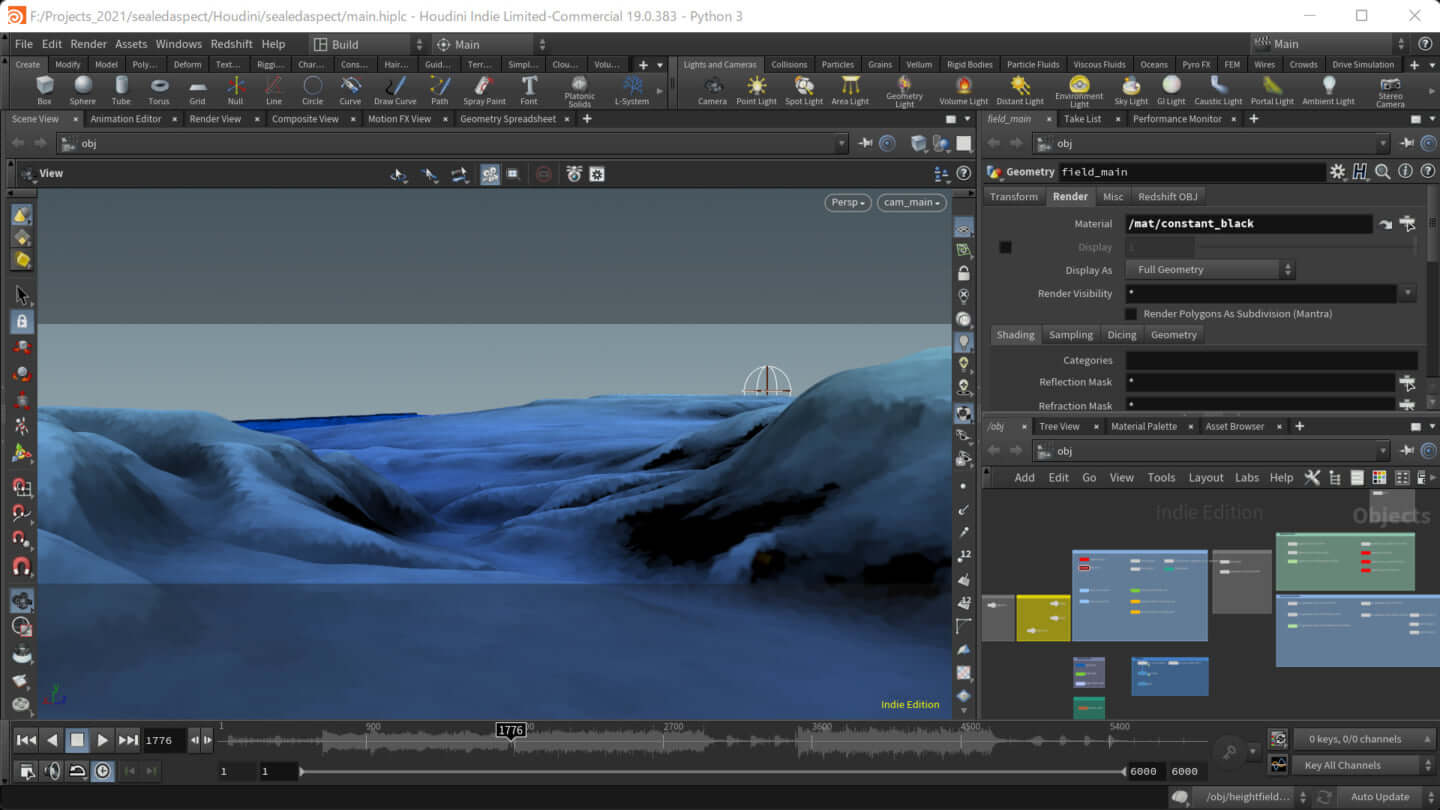
音楽を手がけたのは、作編曲家として舞台やファッションショー、映像作品の音楽制作に携わるほか、キーボーディストとして女王蜂やポルカドットスティングレイなどのグループにも参加するながしまみのりだ。
NAGASHIMA Minori created the music. As a composer and arranger, she has been involved in stage, fashion shows, and music for video productions, as well as having participated in groups such as QUEEN BEE and Polkadot Stingray as a keyboardist.
「最初はジェネレーティブに映像と音を作ろうと考えていたんですよ。海底のデータを数値化し、その数値をベースに音と映像が変化していくという作り方ですね。でも、今回の展示場所がクルーズターミナルの客船発着場のモニターであり、なおかつ3分という作品の長さが決まっていたので、だったら3分でしっかり起承転結があるものを作ろうと。海底×自分なりの起承転結、物語、ストーリーを考えて音楽を作りました」(ながしま)
“At first, I’d thought about creating the video and music through a generative process. It’s a way of creating that expresses data on the seabed in numerical form, and the music and video change based on those numerals. However, since the exhibit site is a monitor at the Cruise Terminal passenger arrival and departure station, and the length of the piece was set at three minutes, I decided to create something that has a complete introduction, development, climax, and conclusion. I composed the music thinking of the seabed and my own ideas for the story and introduction, development, climax, and conclusion.” (NAGASHIMA)
ながしまは海底の世界を再現するのではなく、そこに新たなイメージを加えることで新たな創作への可能性を切り開いた。
Rather than recreate the world at the bottom of the sea, she opened up the possibility of new creations through the addition of new images.
「今回データから映像を作ってもらっているので、下手をするとただ地形を表現した記録映像になりかねないなと思っていたんですよ。音楽と映像のアート作品としてデータを消化するなかで、自分たちの主観や海に対するイメージを入れていってもいいんじゃないかなと考えるようになりました」(ながしま)
“Mr. OISHI made the video based on data, so I was afraid that if I didn’t do a good job the artwork would be nothing more than a video recording conveying topography. While digesting the data as a piece of art combining music and video, I started to think that it would be good to include our own subjectivity and images of the sea.” (NAGASHIMA)
太鼓やバチの音を加工して使用するなど、音楽には日本的なニュアンスがさりげなく散りばめられている。また、カメラの視点が探索する海底の世界には、身体的なイメージも重ね合わされている。ミクロとマクロのイメージが東京湾という舞台で交差し、新たなるイメージが生み出されていく。
Japanese nuances are occasionally scattered in the music, including the processed sounds of drums and drumsticks. In addition, the undersea world explored from the camera’s perspective is overlaid with physical images. Micro and macro images intersect on the stage that is Tokyo Bay to produce new images.
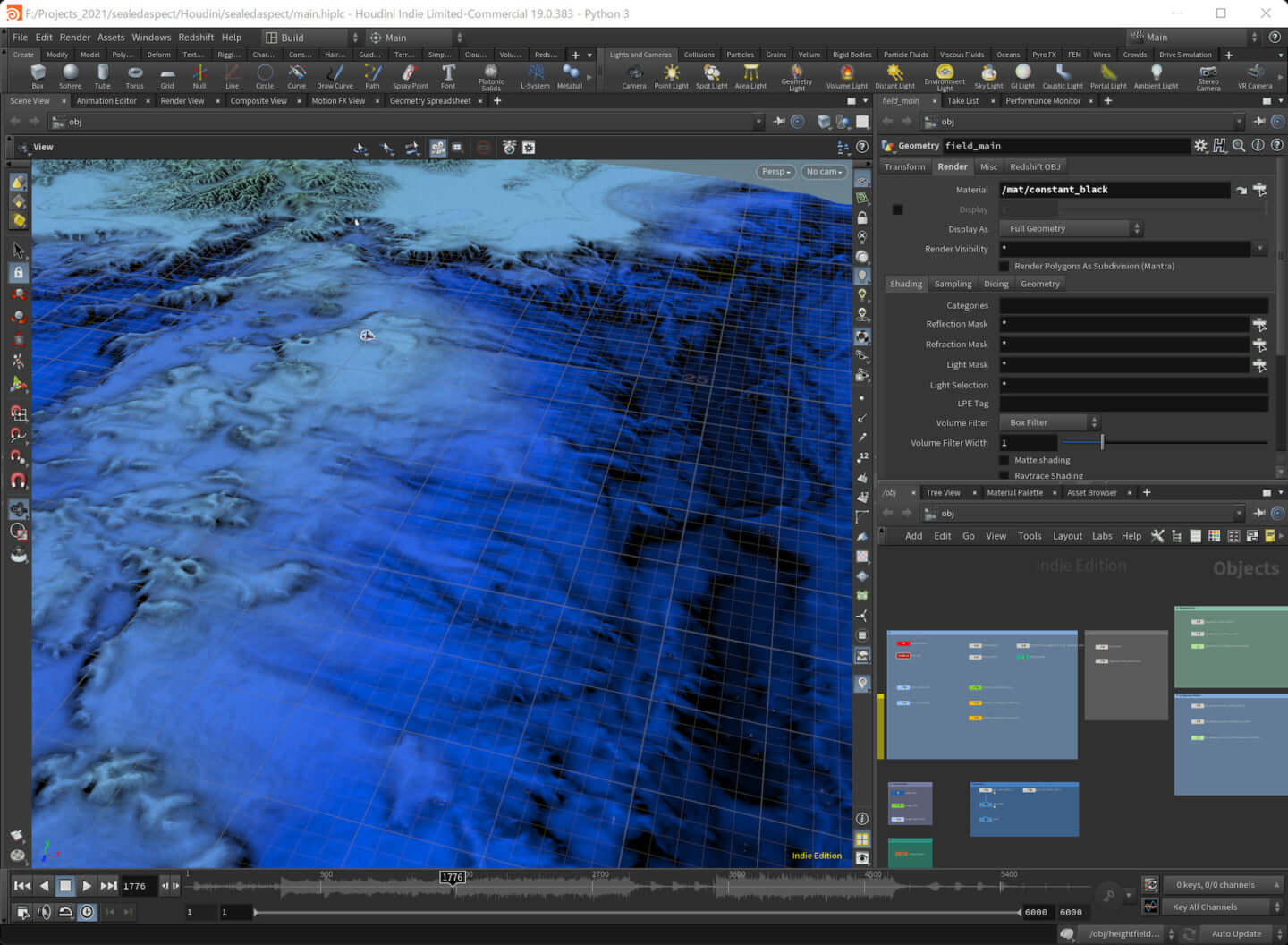
大石とながしまは『sealed aspect』というこの作品を通して、100年後の世界に生きる人々にどんなことを伝えたいのだろうか。
What do Mr. OISHI and Ms. NAGASHIMA want to communicate to people living in this world a hundred years from now through this artwork, “sealed aspect”?
「海底の世界だって不変なものではなくて、常に流動しているんですよね。100年後ではわかりづらいかもしれないけれど、1万年後、1億年後ではこの作品のなかの海底とはだいぶ変わっていると思うんですよ。そういう比較の面白さもあるかもしれないですね」(大石)
“Even the undersea world isn’t static. It’s always in flux. A hundred years from now changes may be difficult to see, but ten thousand or a hundred million years from now I think the seabed in this artwork will have changed quite a lot. Maybe there’s something interesting in that comparison.” (OISHI)
「私たちは現代のソフトウェアを使い、海底地形のデジタルデータを解釈して自分たちなりに作品を作ったわけですけど、100年後の人たちからしてみると『こんな機材使って、こんな表現しかできなかったんだ』と言われるような未来がくると思うんですよ。その意味でもこの作品は通過点のひとつだと思うし、そういう作品を作る機会が得られてよかったなと思います」(ながしま)
“We used modern software to interpret digital data on submarine topography and create artwork of our own design, but I think a future is coming where in a hundred years people will say, ‘They used these tools and this is all they could express?’” In that sense, I think this artwork is a waypoint and am glad to have been given the opportunity to create such a piece.” (NAGASHIMA)
Bird’s-eye view of Japan × OISHI Hiroaki + NAGASHIMA Minori
sealed aspect
江原彩子『Hope』/“Hope” by EHARA Saeko

湘南エリアを代表する景勝地、江の島に残る伝説をもとに『Hope』と題した作品を作り上げたのが、「記憶の中の原風景」をテーマにデジタルアートの分野で作品を発表してきた江原彩子だ。
EHARA Saeko has created her work in the field of digital art under the theme, “the unspoiled landscape in my memory”, and for this project has produced the artwork, “Hope” based on the legend of Enoshima, a scenic spot that exemplifies the Shonan area.
湘南に伝わる伝説によれば、江の島にもほど近い鎌倉の地にはかつて五つの頭を持つ龍がいて悪行を重ねていたという。そこへ天女が舞い降り、五頭龍を諭して悪行をやめさせた。天女の天下りとともに出現した島が現在の江の島である――。江原の作品は、そうした江の島の由来に基づいている。
According to the legend passed down in Shonan, a five-headed dragon that once lived in Kamakura near Enoshima committed many wicked deeds. A heavenly maiden came down, admonished the five-headed dragon, and brought an end to the wicked acts. The island that appeared together with the heavenly maiden’s descent from above is Enoshima. The artwork by Ms. EHARA is based on this Enoshima origin story.
「地域に伝わる歴史と映像作品を組み合わせるのであれば、民話をモチーフとするのがいいんじゃないかと直感的に思ったんですね。いろいろと調べた結果、江の島の五頭竜と弁天さまの物語をテーマにしようと決めました。江の島は子供のころから足を運んでいた馴染みのある場所でもあったので」
“I intuitively felt that a motif based on folklore would be fitting for artwork combining video art and history handed down in the region. After doing some research, I decided to make the theme the story of Enoshima’s five-headed dragon and the goddess, Benzaiten. Enoshima is also a familiar place for me that I’ve visited since I was a child.”
民話や伝説とは、過去の歴史を未来に伝えるだけでなく、ときには先人たちの知恵や教訓を後世の人々に伝える役割も持つ。江原はそこにコロナ禍ならではのリアリティーを感じ取ったようだ。
Folklore and legends are not only history passed on into the future, but also sometimes play the role of communicating wisdom and lessons to later generations, and it seems the artist sensed a reality that reflects these elements and is meaningful because of the COVID-19 pandemic.
「コロナが流行り始めてから私たちは生活の中でさまざまなものを失い、新しい発見をしてきたと思うんですね。人間の力ではコントロールできない状況というのは、江の島の伝説に描かれた時代と重なる部分があるんじゃないかと。先祖が培ってきた考え方や前を向く力というのは現代にも通じるんじゃないかと思い、この作品を作りました」
“Since COVID-19 began spreading, I think we’ve lost many things in our day-to-day lives but also made new discoveries. I think the circumstances of humans being unable to have control has overlapping elements with the era depicted in the legend of Enoshima. I created the artwork thinking that ideas cultivated by our ancestors and the ability to look ahead can probably be understood even today.”

また、この作品は江島神社所蔵の縁起絵巻「江嶋縁起」がベースとなっており、作品中では絵巻に描かれた図版も登場する。
In addition, the picture scroll, “Enoshima Engi (the story of Enoshima’s origins)” at Enoshima-jinja Shrine became the basis for the artwork, and illustrations drawn on the scroll appear in the art piece.
「今回は江島神社が所蔵する『江嶋縁起』のデジタルデータを特別にお借りできたんですが、元の絵画のデータは崩さないように心がけました。本物が持っている色味を映像で忠実に伝えられたらとも考えていましたね。お借りする意義や承諾してくださった意味があると思うので、どうしたら映像で物語をきちんと伝えられるか意識していました」
“For this piece, I gained special permission to borrow the digital data of Enoshima-jinja Shrine’s “Enoshima Engi” and was careful not to alter the original illustration. I wanted to faithfully convey the colors of the actual illustrations in the video. I think borrowing it was significant and gaining consent was meaningful, so I was mindful of how I could accurately convey the story through video.”
作品は混乱に満ちた前半から「江嶋縁起」の絵巻がインサートされる中盤を経て、光に満ち溢れた後半へとドラマチックに展開していく。本作の制作環境について江原はこう解説する。
The artwork unfolds dramatically from the first half as it plunges into chaos, through the middle where “Enoshima Engi” is inserted, and then to the last half that is brimming with light Ms. EHARA explained about the production process of this artwork.
「龍が出てくる一番最初のシーンはHoudiniというソフトウエアで作っていまして、ノードというエフェクトを組み合わせてひとつのシーンを作り上げています。そこから書き出したものをAdobe After Effectsで加工し、最終的にはPremiere Proで音楽と合わせて編集しました」
“I created the very first scene where the dragon appears using Houdini software and incorporated an effect called “nodes” to produce a single scene. What I produced from that point was processed using Adobe After Effects, and at the end used Premiere Pro to add music and edit.”

音楽を手がけたのは、海外レーベルからのリリースもあるアンビエント作家、安河内秀太。水と火、光の眩いイメージが交差する映像とともに、彼の音楽が物語を盛り立てている。
YASUKOCHI Shuta created the music. He is an ambient music producer who has released music on overseas labels. His music enhances the story in combination with the video of intersecting images of water, fire, and dazzling light.
今回の展示会場となった東京国際クルーズターミナルの客船発着所という場所については、江原はどのように意識していたのだろうか?
What was Ms. EHARA’s perception of the exhibit site, which is the arrival and departure station at Tokyo International Cruise Terminal?
「知らない世界への旅立ちってすごくワクワクしますけど、不安もやっぱりありますよね。映像にしても音楽にしても感覚的に入ってくるものなので、旅立ちの前に心地良くなってもらえたらと考えていました。旅立つ人の背中を押すものになったら嬉しいですね」
“Setting off into an unknown world is very exciting, but there is also a feeling of anxiousness. Whether it is the video or music, the artwork is approached with the senses, so I hope people will be put at ease before their departure. I’ll be happy if it gives travelers some encouragement.”

「江嶋縁起」のデジタルデータをもとに作品制作を行うことができたのは、江原にとっても貴重な体験となった。デジタルアートのモチーフとして文化財を扱う意義について彼女はこう話す。
Being able to create the artwork based on the digital data of “Enoshima Engi” became a valued experience for the artist. She spoke of the significance of handling cultural property as a motif for digital art.
「今後も今回のように価値のある文化財とコラボレーションする機会があったら嬉しいですね。映像って基本的に劣化しないので、元の作品も傷つけないですし、インターネットがあるかぎり多くの方に観てもらえると思うんですね。こうやっていわれのある物語を映像作品として残すことで、ストーリーそのものを後世に伝えることにもなると思うんですよ」
“I’d be happy if in the future I could have another chance to collaborate on projects incorporating valuable cultural properties as I did in this exhibit. Fundamentally, video doesn’t deteriorate, so the original work won’t be harmed, and I think it can be viewed by many people as long as there is the internet. I think leaving behind video artwork like this of an enduring story means the story itself will be passed on to later generations.”
江の島は全国的にも知られる観光地だが、島の縁起についてはあまり知られていない。今回のような作品表現を通じ、江の島の古層に眠るものに初めて触れる方もいることだろう。
Enoshima is a nationally known tourist spot, but the island’s origins are not well known. Perhaps this artwork will introduce some people for the first time to what lies within Enoshima’s layers of history.
Enoshima Engi (the story of Enoshima’s origins) × EHARA Saeko
Hope
滝戸ドリタ『冬の虹蜺』/“The Sigh of Eels” by TAKIDO Dorita

ファインアートやデザイン、ゲーム、映像など多方面での経験を持つディレクター/デザイナーの滝戸ドリタ。彼女が今回テーマとして掲げたのが、江戸時代から人々の胃袋を支えてきた江戸前のウナギである。『冬の虹蜺』という印象的なタイトルは江戸時代末期の浮世絵師、歌川国芳の美人画「春の虹蜺」になぞらえたもので、こちらの作品ではウナギの串を掴む女性の姿が描かれている。国芳がその作品を描いてから180年以上。江戸前のウナギを取り巻く状況は大きく変わった。2014年には国際自然保護連合(IUCN)によって東アジアに生息するニホンウナギが「絶滅する危険性が高い絶滅危惧種」に指定され、生存が危ぶまれているのだ。
TAKIDO Dorita is a director and designer with a multifaceted career that includes fine arts, design, games and video. For the theme of her artwork, she chose the Edo eel, which has been a part of Japan’s diet since the Edo period. The striking title, “The Sigh of Eels” (Japanese title: “Fuyu no Kougei” (Winter Rainbow)) is inspired by “Haru no Kougei” (Spring Rainbow) by UTAGAWA Kuniyoshi, an Ukiyo-e (Japanese woodblock print) artist from the late Edo period, who depicted a beautiful woman holding a skewered eel. Over 180 years have passed since he drew that picture and the circumstances surrounding the Edo eel have drastically changed, as its very existence is under threat. In 2014, the International Union for Conservation of Nature (IUCN) designated the Japanese eel that live in East Asia as “an endangered species at high risk of extinction.”
「そうした状況に対して向き合い、考える機会になったらと思いこの作品を作りました。調べていくなかで分かったのは、絶滅の一番の要因となっているのがウナギの乱獲ということ。そのほかにも河川の環境であるとか水質汚染の問題もありますし、シラスウナギの密猟や密売の問題もある。ただ、こうした問題は法整備をすればなんとかできるんですね。また、バイオテクノロジーを使って解決できるんじゃないかという研究者もいらっしゃって。今回の作品ではそういうところに目を向けながら、ウナギのロボットを作ってみようということになりました」
“I created this artwork hoping it would provide an opportunity for people to confront and think about this situation. As I researched the topic, I came to understand that the number one cause of extinction is the overfishing of eel. Other causes include the environment of rivers and the problem of water pollution, as well as the poaching and illicit trade of glass eels. However, these problems could be resolved with the development of legislation. There are also researchers who believe a resolution is possible through biotechnology. With these things in my mind, I decided to create a robotic eel for this artwork.”
レプトケファルス幼生 – Leptocephalus
動画提供:新江ノ島水族館
Video provided:ENOSHIMA AQUARIUM
滝戸がまず取り組んだのが、ウナギの幼生であるレプトケファルスのロボットのデザイン・設計・開発だ。
Ms. TAKIDO first tackled designing, planning, and developing a robotic leptocephalus, which is an eel’s larva.
「3Dプリンターでイチから作りました。水中ロボットは作ったことがなかったので、水圧と防水の問題を考えるのに結構な時間を使ってしまって。そのうえでどうやってヒレを動かして前に推進させるか、なかなか大変でした」
“I started from scratch using a 3D printer. I’d never made an underwater robot, so it took me a lot of time to consider the issues of water pressure and waterproofing. Plus, it was quite difficult to figure out how to move the fins to propel it forward.”
滝戸が制作したレプトケファルスのロボットのなかには、魚の識別に使われるウナギの耳石が入っている。ウナギの生態はいまだに謎が多いが、耳石はウナギの生態や繁殖状況を知るうえでも重要な存在といわれている。
Inside the robotic leptocephalus she created there are eel otoliths. Otoliths, or ‘ear stones,’ are used to identify fish. A lot is still unknown about the ecology of eels, but it is said that otoliths are important for understanding the eel ecology and reproductive state.
「耳石を調べることによって『これは乱獲されてないウナギ』『これは乱獲されたウナギ』と分かるそうなんです。バイオテクノロジーの活用として、こういう識別方法があるということを示すためにロボットにも耳石を入れました」
“Apparently, you can understand if eel has been overfished or not by looking at the otoliths. I also inserted otoliths into the robot to show that this method of identification exists as a utilization of biotechnology.”
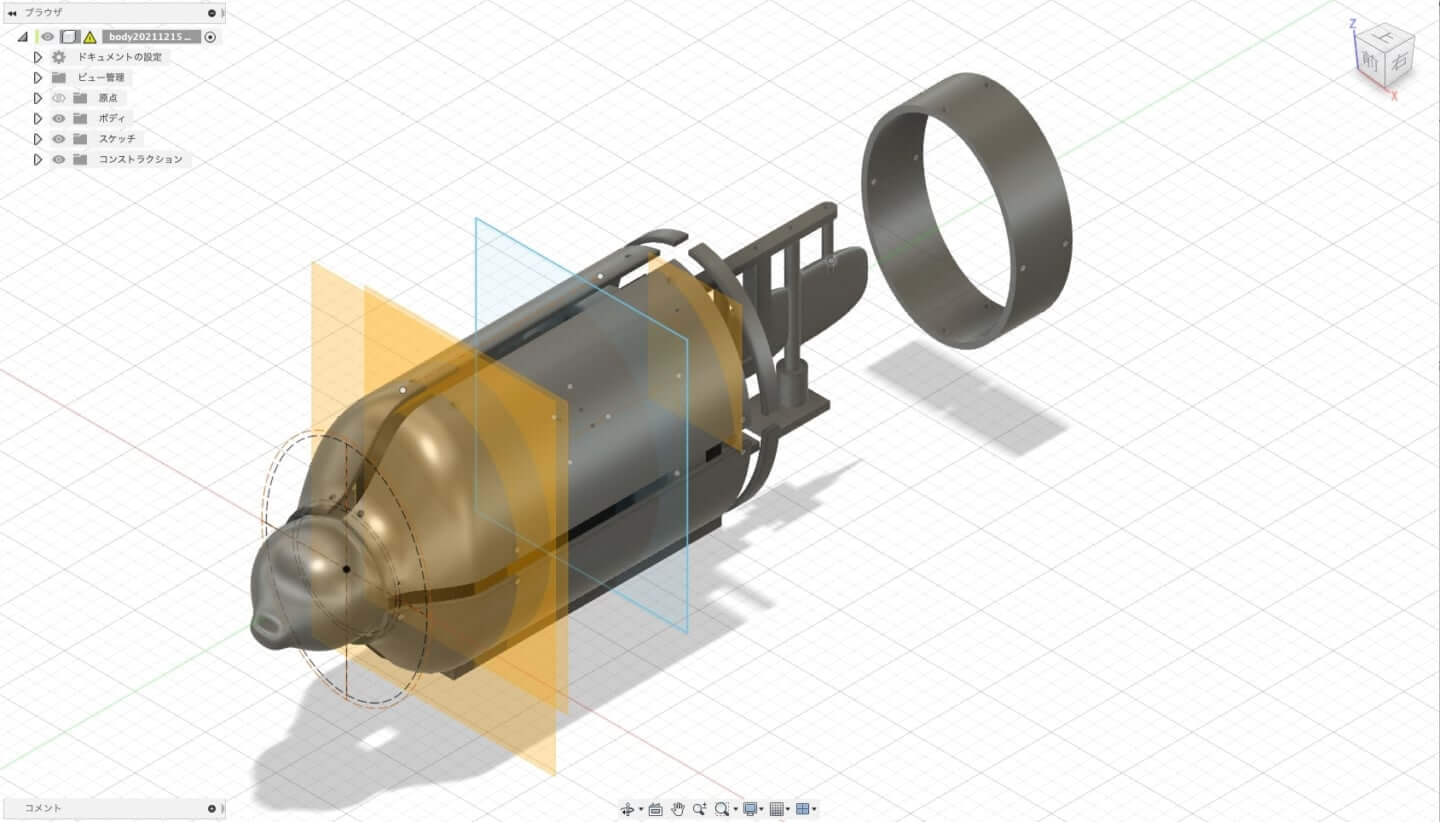

『冬の虹蜺』は水中モデルとレプトケファルスのロボットが水中で踊るシーンで幕を開ける。やがてカメラは水面から顔を出し、そこが東京湾であったことが示される。エンディングを飾るのは、かつて大量の江戸前ウナギが獲られたという小名木川のカットだ。
“The Sigh of Eels” begins with a scene showing an underwater model and the robotic leptocephalus dancing in the sea. In the end, the camera emerges from the water revealing Tokyo Bay. The ending features a cut of the Onagi River where large numbers of Edo eels were once caught.
バイオテクノロジーによる改善の道を探りながら、ウナギが絶滅の危機に晒されている現状を広く伝えること。本作における滝戸の目的意識は明快だ。彼女はこれまでにもテクノロジーを使用しながら、植物や虫をモチーフにした作品制作を続けてきたが、そこには生命に対する滝戸の意識も反映されている。
While exploring a path to improvement through biotechnology, the video raises awareness about the current state of the eel that is exposed to the danger of extinction. The aim of this work by Ms. TAKIDO is clear. She has been utilizing technology to create artwork using plants and insects as a motif, reflecting her mindfulness of life.
「一番大きいのは人類が傲慢になっているということですよね。植物や虫のほうが人類よりも先に存在していて、なおかつ人類よりも繁栄している。そこを軽視している気がして。学ぶべきこと、生き延びる方法は彼らのほうがよく知っていると思うんですよ。そこに気づくための入り口を作りたいんです」
“The biggest factor is the arrogance of humankind. Plants and insects existed before humans, and even thrive more than humans. I feel we are dismissive of that. I think they know what should be learned and ways to survive even better than we do. I want to create a gateway to that realization.”

今回の作品では水中撮影のプロフェッショナルやロボットデザインの技術者が参加しているほか、ウナギの養殖を行う岡山のエーゼロ株式会社にも協力を仰いだ。彼らの中には「ウナギの絶滅をなんとか食い止めたい」という共通の想いがある。
In addition to professional underwater camera operators and robot design engineers participating in the making of this artwork, the artist also enlisted the cooperation of A Zero, Inc. in Okayama that farms eels. Everyone involved shares the same desire to stop the extinction of eels.
「100年後、ウナギも人間も生き残っていたらいいですよね。食糧危機の問題もあるし、100年後の人々に『2022年の人類も一生懸命やってたんだな』と思ってもらえたらいいですね」
“It’d be great if a hundred years from now both eels and people will have survived. There is also the issue of the food crisis, and it’s my hope that a century from now people will think that humans in the year 2022 did their best.”
滝戸はそう話す。国芳の時代、東京湾に住むウナギが春を迎えていたとすれば、絶滅の危機に瀕している現在はまさに冬の時代といえる。春の日はいつの日かやってくるのだろうか。『冬の虹蜺』は現代に生きる私たちがまさに分岐点にいることを実感させられる作品である。
That is the sentiment expressed by Ms. TAKIDO. If eels living in Tokyo Bay in Kuniyoshi’s time welcomed spring, then this day and age when they are on the verge of extinction can truly be called wintertime. Will spring come someday? “The Sigh of Eels ” is artwork that makes us realize that we who live today are unquestionably at a fork in the road.
Edo eel × TAKIDO Dorita
The Sigh of Eels
「東京」というフィールドを考えたとき、私たちは当たり前のように高層ビルが立ち並び、多くの人々でごった返す都市空間のことを連想するだろう。
When we think of the place ‘Tokyo,’ we naturally think of it as an urban space lined with tall buildings and crowded with people.
だが、下には「東京海底谷」とも呼ばれる東京湾の深海が広がっていて、そこにはまるでモンスターのような深海魚たちが生息している。頭上を見上げれば鳥たちが飛び交う空の世界が広がっていて、西には奥多摩の森の世界が、南には伊豆諸島~小笠原諸島にいたる島嶼部が続く。
However, spread out below it are the deep waters of Tokyo Bay, which is also called the Tokyo Submarine Canyon, home to deep-sea fish that look just like monsters. Look up at the sky and we see an expansive realm where birds fly about. Look to the west and we see a forest realm in Okutama, and to the south a continuous string of islands that stretches from Izu to the Ogasawara.
そのように縦横に広がる無限の「東京」のなかで海のあり方を捉え直すこと。テクノロジーとアートを用いて、海にまつわる風土と文化を再構築すること。『+A+』における3組の作品に触れることで、私たちのなかの「東京」のイメージは大幅に拡張され、更新されることだろう。『+A+』は私たちに多くの気づきを与えてくれるプロジェクトでもあるのだ。
In this project, the artists rethink the nature of the sea within the endlessness of “Tokyo”, and reinterpret the natural features and culture associated with the sea through the use of technology and art. By experiencing the artwork of these three groups in the +A+ exhibit, we can greatly enhance and change our image of Tokyo. +A+ is a project that gives us much to discover.

+A+ Artist Interview | CULTURE GATE to JAPAN
Text by 大石始/Hajime Oishi
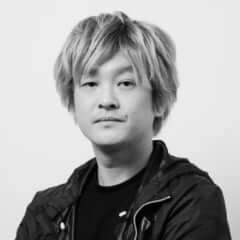
大石啓明/OISHI Hiroaki
1984年、福岡県生まれ。九州大学大学院芸術工学府修了。コンピュータグラフィックスとアルゴリズムによる、身体と環境との対話性、有機的、情緒的表現を追求した映像メディア作品を制作し、教育・研究活動を行う。近年の主なプロジェクトにteamLab『憑依する滝 / Universe of Water Particles』(2013年)の映像制作、ながしまみのり『Queen of xxx』(2019年)のMV制作などを手がける。武蔵野美術大学デザイン情報学科専任講師。
OISHI Hiroaki was born in Fukuoka Prefecture in 1984. He graduated from Kyushu University Graduate School of Design. He produces video media art that strives for interactive, organic, and emotional expression with the body and environment through computer graphics and algorithms, and carries out educational and research activities. Recent major projects include the teamLab video production of “Universe of Water Particles” (2013) and a music video production of Minori Nagashima’s “Queen of xxx” (2019). He is a senior lecturer at Design Informatics, Musashino Art University.
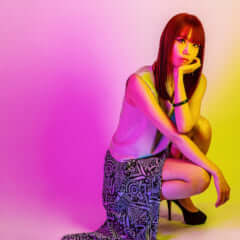
ながしまみのり/NAGASHIMA Minori
音楽とアートの領域を自在に行き来しながら活動するアーティスト。東京藝術大学卒業、慶應義塾大学大学院修了。作編曲家として舞台やファッションショー、映像作品の音楽に携わるほか、バンド「女王蜂」などに参加。アート作品や展示ディレクターとしても活動しており、近年では「ヨルノヨ -YOKOHAMA CROSS NIGHT ILLUMINATION-」(横浜市、2020年)「人体 NETWORK SYMPHONY (特別展 人体 ―神秘への挑戦―)」(国立科学博物館、2018年)など大規模作品の制作を主導。作品の音楽は自身で作曲、音響設計まで行っている。
NAGASHIMA Minori is an artist who works freely going back and forth between the fields of music and art. She graduated from Tokyo University of the Arts and Keio University graduate school. In addition to being involved in stage performances, fashion shows, and video productions as a composer and arranger, she also participates in the band, QUEEN BEE. She is also active as an exhibition and artwork director. In recent years she has played a key role in major art projects, such as “yorunoyo – YOKOHAMA CROSS NIGHT ILLUMINATION” (Yokohama City, 2020) and “JINTAI NETWORK SYMPHONY at THE BODY—Challenging the Mystery” (National Museum of Nature and Science, 2018). Her work includes music composition and acoustic design for those artworks.
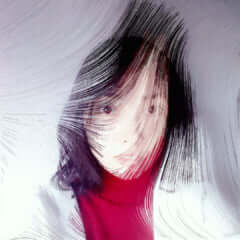
江原彩子/EHARA Saeko
1985年、東京都生まれ。アーティスト、VJ。オランダのハーグ王立美術学院(KABK)を卒業後、10年以上、コンサートを中心に、エンターテインメントの世界でVJとして映像制作やオペレーションなど多数のステージを手がける。2020年より本格的に国内外で活動を開始。「記憶の中の原風景」をテーマにデジタルアートの分野で作品を発表する。近年の主な活動に、「MUTEK.JP」(2021年)「XRE’s Ars Electronica Festival Garden NYC Portal」(2021年)など。
EHARA Saeko was born in Tokyo in 1985. She is an artist and a video jockey. After graduating from the Royal Academy of Art, The Hague (KABK) in the Netherlands, for over ten years she has been involved in the entertainment world, working in various stages, primarily in concerts, in roles such as video production and operation as a video jockey. She began her activities in earnest in Japan and abroad in 2020. Under the theme, ‘the unspoiled landscape in my memories,’ she creates artworks in the field of digital art. Her latest major activities include “MUTEK.JP” (2021) and “XRE’s Ars Electronica Festival Garden NYC Portal” (2021).
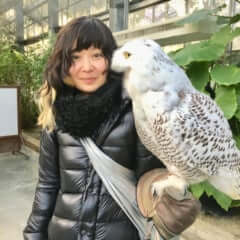
滝戸ドリタ/TAKIDO Dorita
東京を拠点とし、アーティスト、デザイナーとして活動。異なる機能や感覚を組み合わせることによって、感覚がずれるような新たな体験を作り上げる。テクノロジーと洗練されたデザインを並走させながら、思考の入口を作る。『Bug’s Beat』(2017年)でPRIX ARS ELECTRONICA DIGITAL MUSICS & SOUND ART Honorary Mentions受賞およびARS ELECTRONICA STARTS Prize 2017ノミネート。『Slime Synthesizer』(2014年)で第18回文化庁メディア芸術祭エンターテインメント部門新人賞を受賞。シンガポールやオランダでの展示など国内外で活躍。
TAKIDO Dorita is a Tokyo-based artist and designer. She creates new hands-on experiences that disrupt the senses by combining different functions and senses. She builds portals to thoughts while pursuing technology and sophisticated designs side by side. She earned Honorary Mention at the Digital Musics & Sound Art of Prix Ars Electronica and was nominated for the 2017 Ars Electronica STARTS Prize for “Bug’s Beat” (2017). “Slime Synthesizer” (2014) won the New Face Award in the Entertainment Division at the 18th Japan Media Arts Festival. She is active in Japan and internationally, with her work having been exhibited in Singapore and the Netherlands.
INFORMATION

今回の展示場所であるターミナルの建築的な構造。港や東京湾を象徴するランドスケープ。「+A+」という架空のコードによってクルーズターミナルに接続し世の中に写し出される文化芸術資源の解放時空ゲート。海と日本の文化は、寄せては返す波のようにいつでも「新鮮」で、そして「永遠」。
It represents the architectural structure of the terminal, the site for this exhibition. A landscape that symbolizes the port and Tokyo Bay. Through the imaginary code +A+, a space-time gate that releases cultural and artistic resources is linked to the cruise terminal and projected to the world. Like the waves that come and go, the ocean and Japanese culture are both constantly innovating and timeless.
CULTURE GATE to JAPAN
+A+
”心海に誘うターミナルへようこそ”
“Welcome to the terminal that entices you to the spirit of the sea”
東京国際クルーズターミナルから「海」を見ながら、近づいては遠くへゆらぎ、とどまることない波間に、人間社会における「時間」とは別の尺度で”とき”を感じ、自分や他者との「心」の新たなふれあいを想像しました。
While looking out on the sea from Tokyo International Cruise Terminal, in the drifting of the waves that move closer and farther away without ever ceasing, as creators we feel ‘time’ that is measured by a different scale than the hours of human society and imagine new interactions of the spirit within ourselves and others.
「+A+ (プラス・エー・プラス)」は、「+A+」という架空のコードがポート(PORT/港)に接続する「世界」を音と映像で鑑賞する展示です。「A」は、出会いや伝承を内包する港の存在と、日本文化の文脈に「”A”dapt(適応)」した海との関わりを「”A”rtist」が表現し、「”A”rchive」する文化芸術活動の過程をあらわしています。
+A+ (Plus A Plus) is an exhibit that uses sound and images to appreciate the ‘world’ of +A+, an imaginary code that connects to the port. ‘A’ represents the process of cultural and artistic activities in which ‘A’rtists express and ‘A’rchive the interaction between the existence of the port that encompasses encounters and traditions, and the sea that ‘A’dapts to the contexts of Japanese culture.
今回展示する3組のアーティストは、文化的な視点を自らに置き、この関係性を環世界として人の「心」と「海」について捉えることで心にふれる景色へと誘い、時代を超えたうねりとして、本質的な問いに向き合う時間を刻みます。東京国際クルーズターミナルで、みなさまの「心」のなかにある「海」を発見し、芸術的に表現されてきた日本の海の文化の新たな視座を、東京湾の風景とともにご鑑賞ください。
The three artists whose works are exhibited here take an introspective cultural view and capture this relationship of the human spirit and the sea as a self-centered world. The work invites you to a vista that touches the spirit, and marks a time that confronts essential questions as rolling waves that surpass the ages. At Tokyo International Cruise Terminal, discover the ‘sea’ within your ‘spirit,’ and together with the view of Tokyo Bay, appreciate these new perspectives of Japan’s sea culture through artistic renderings.
竹川潤一(david watts inc.)
TAKEKAWA Junichi (david watts inc.)